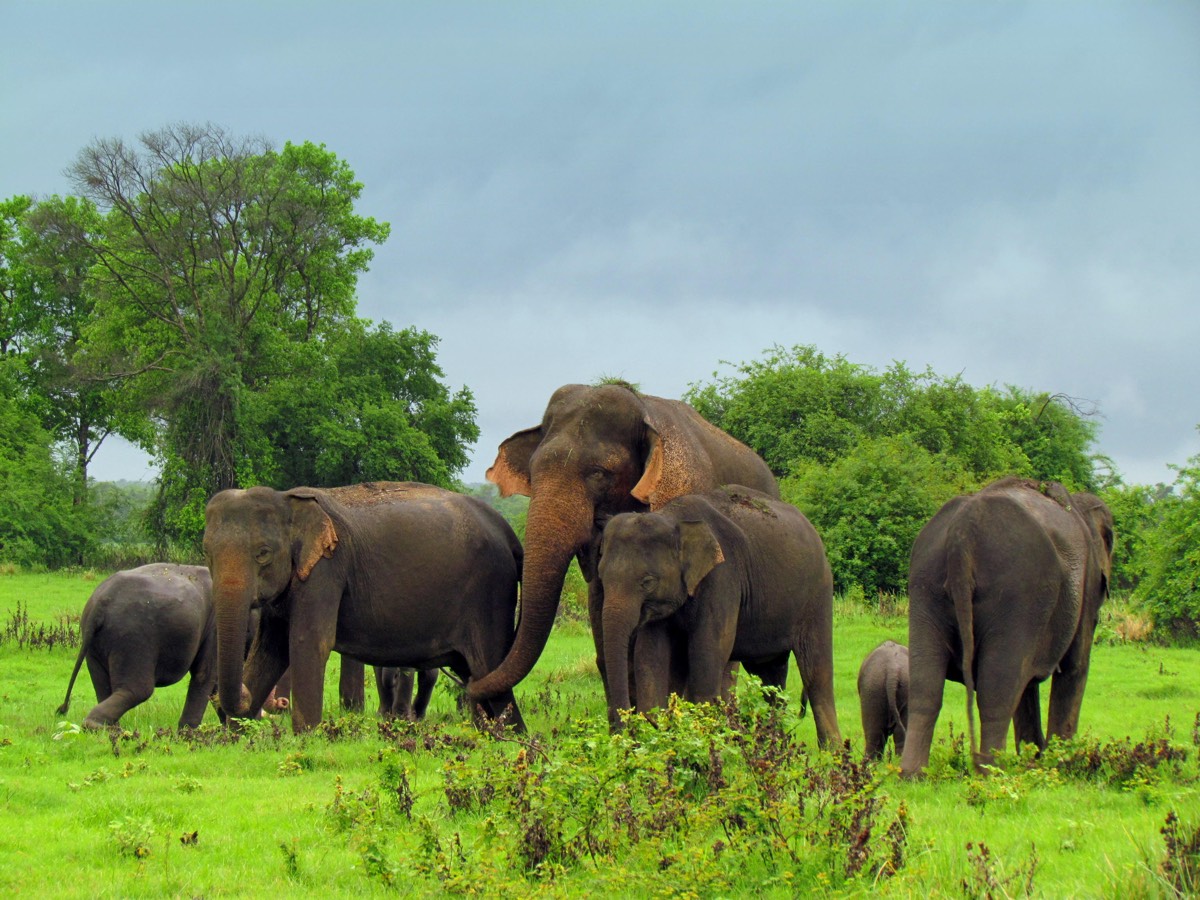Imagine a wildlife sanctuary where gentle giants roam, sloth bear slowly crawls and birds find refuge – Wasgamuwa National Park is an ideal place for nature lovers and wildlife photographers on the lookout for a mystical wilderness atmosphere.
If you have the cultural triangle (Sigiriya, Anuradhapura, Polonnaruwa) scheduled on your Sri Lanka tour itinerary, then the Wasgamuwa National Park is a good wilderness option for those who prefer the less crowded tourist attractions in Sri Lanka.
This dry zone park is home to about
- 150 floral varieties, many which are endemic
- 23 mammal species
- 140bird species, 5 of which are endemic
- 15 amphibian species including endemic ones
- 35 reptile species
- 52 butterfly species
- 17 species of fish.
Located in the North Central Province, fenced by the Mahaweli River in the East and the Amban River, the Wasgamuwa National Park spans 39,322 hectares. The vegetation features here are more of the typically mixed evergreen Dry Zone forest. Sudu Kanda (White Mountain) is the highest point of Elevation at the National Park and is located on the Western boundary, 470 meters high. Quartz and Marble are components that make up the soil at this Park.
The Wasgamuwa National Park is popularly known for the abundance of sloth bears. Also the ‘marsh elephant’ of Wasgamuwa and some of the largest Asian elephants reside here. ‘Walas Gamuwa’ in Sinhalese means a gathering of bears, which is where the name of the sanctuary ‘Wasgamuwa’ is believed to have originated. In 1984, the sanctuary was declared for the protection of displaced wild animals when the Mahaweli Development Scheme was taking place.
Accommodation options
Wildlife bungalow locations for the discerning traveler:
- Kadurupitiya
- Mahaweli
- Wawul Ebe
Campsite locations for the adventurous traveler:
- Mahaweli Ganga I and II
- Medapitiya I and II
- Ulpathhatha
- Hatharaman Handiya
- Waulebe
Two villas outside the park:
- Gale Bungalow
- Angammedille
Wildlife within the park
November to May are the best months to visit Wasgamuwa National Park. During other months, most of the animals tend to migrate to the nearby Kaudulla and Minneriya National Parks. When the north-east monsoon is going on, several shallow water bodies become homes for different bird species such as painted storks, ducks and other waders. It is a mesmerizing sight to see the colorful water lilies that blossom in the tanks.
The two best times of the day to spot animals are in the early morning and late evening. Common spottings include herds of spotted deer, elephants, sloth bear and the endemic jungle fowl along with a lonely mugger crocodile who is sunbathing around a marshy waterhole.
Common wildlife sightings:
- Elephant families
- Bahuru Manawa – Stork: the heaviest bird in Sri Lanka
- Spotted Deer
- Peacock
- Grey headed fish eagle
- Purple faced langur monkeys
- Wild boar
- Sambar
- Buffalo
- Leopards
- Water monitor lizard
- Mugger crocodile
- Estuarine crocodile
- Python
Sudu Kanda on the western boundary of the Wasgamuwa National Park is a rocky mountain range that is home to the mysterious sloth bear. At the crack of dawn, this area is a stunning sight: fresh coat of colors shining amidst the morning sun. Casual travelers to the sanctuary rarely visit the Sudu Kanda as it is 45 kilometers into the park and only the fortunate visitors will spot the sloth bears. Just as beautiful as the sunrise is the sunset over a tank in Wasgamuwa. Fairy tale sceneries can be captured as the water bodies turn gold and peacocks form shadowed images on trees.
Birdlife at Wasgamuwa National Park
- Endemic Red-faced malkoha
- Ceylon jungle fowl
- Sri Lanka Trogon
- Racquet tailed drongo
- Endemic yellow fronted barbet
- Endemic Sri Lanka spurfowl
- White-necked stork
- Lesse adjutant stork
Ancient ruins within the National Park region
Within the region of Wasgamuwa National Park, there are remains of a few small rainwater reservoirs and ruins of temples. This shows that prosperous villages once existed within this locality. The ruins include a reclining statue of Lord Buddha at Buduruwayaya and are said to be about 1800 years old. In the 12th century, King Parakramabahu built an island in a canal known as Kalinga Yoda
Ela, where stone pillars of a ruined palace are still in place. These are also some exciting historical sites you can add to your Sri Lanka excursions.

